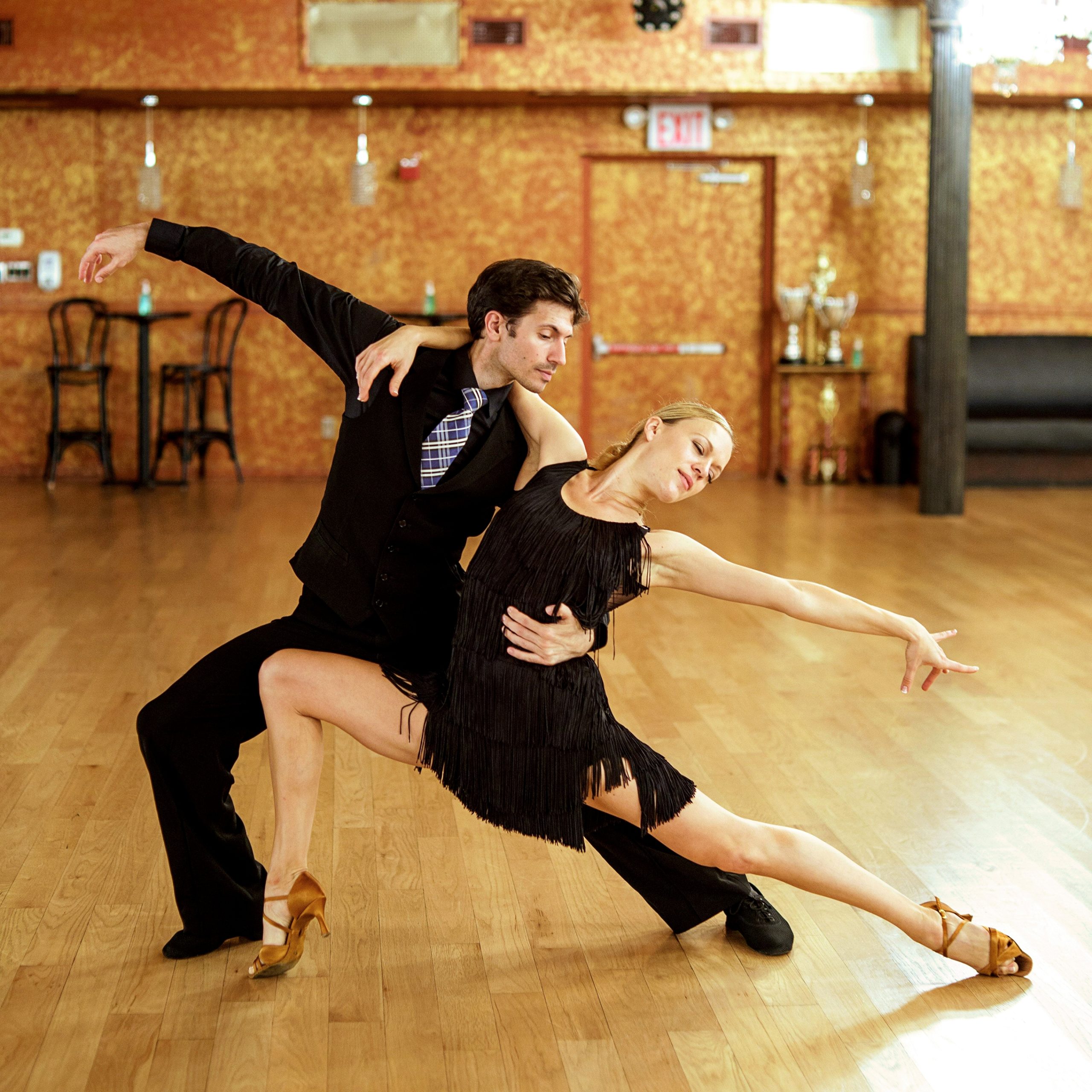Pro Tips for Getting Comfortable With Weight Sharing in Partnering
Weight-sharing is the foundation of any kind of partnering in dance—from ballet lifts to contact improvisation balances to ballroom sequences.
But it’s also its own language, says Andrew Suseno, who teaches contact improvisation and his own contact-based style called Parcon Resilience: “Our intentions, our emotions, our relationships—all of it can be communicated through touch, and through sharing weight,” he says. “When we share our weight, we’re sharing ourselves.”
This makes weight-sharing both a physical challenge and an exercise in vulnerability and trust that some dancers may find difficult. But with a strategic approach, dancers can build more comfort and confidence in any partnering environment.
Start With Yourself
The biggest problem ballroom dancer and teacher Ana Jurenec sees with dancers learning how to share weight is a lack of connection with their own bodies, “and then trying to do something with another person,” she says. “Instead, where is your body weight? Where is your center of gravity? How is your spine moving? Then, invite another person into that.”
Suseno believes it starts with listening to yourself. “What are the signals that are telling you to shift your leg so you’re more stable? What are the signals that are telling you to yield?” he asks. Once you can begin to sense this in your own body, you’ll start to be able to sense it in others.
A thoughtful preparation can help with this: Suseno suggests warming up by connecting all parts of the body, especially the torso, to yield with the ebb and flow of the breath. You can “wake up the body to yielding” by using your own hands, objects in the room or another person. You can also practice yielding your weight to something that’s more predictable than another human, like the floor. Exploring a stable surface with different parts of the body—Suseno recommends slowly rolling on the floor to awaken the core—allows dancers “to find coordination and get primed for the unpredictability of being in a dynamic relationship with another person,” he says.
Create Trust
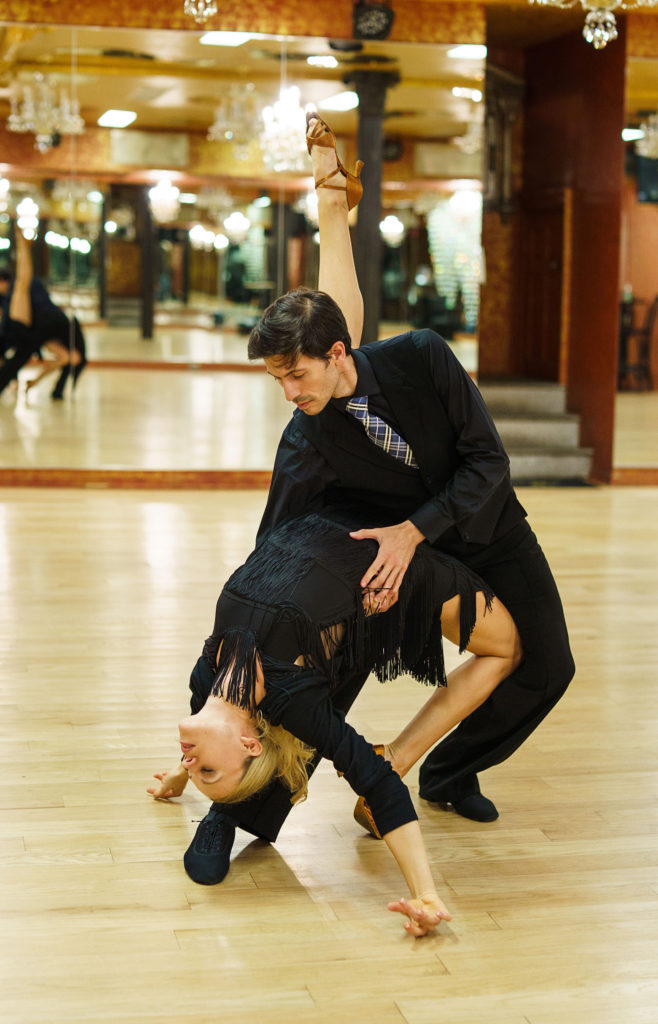
For Suseno, weight isn’t just our physical bodies. “It includes our identities, our histories, our struggles,” he says. “To create a safe and healthy place for that weight to be held, the conversation needs to go beyond the physical.” For example, if someone is struggling with a loss, “their sense of balance, their weight-sharing, is going to be different,” he says.
For this reason, checking in with fellow dancers before beginning a weight-sharing practice is essential, says Suseno. He uses community or partner agreements that set expectations in a weight-sharing space, making a point to address things like dancers’ lived experiences and preexisting imbalances of power. One of his favorite agreements: “Everyone is empowered with their ‘no,’ ” meaning that dancers can say “no” to any movement they aren’t comfortable with, and that “no” is respected. While this may not be realistic in spaces with more hierarchical power dynamics, being open about injuries, aches and pains, and other issues can go a long way towards building a safe and trusting partnership, as can a practice of continually asking for consent, which Jurenec does with students.
Learn to Listen
It can take practice to be able to hear what your partner is telling you through their body. Jurenec has beginner students start classes by walking around the room in pairs while maintaining a point of connection. As they become more comfortable, she’ll have one partner close their eyes while the other leads them around, building into more complex movement and more weight-sharing, and eventually having the leader and follower constantly shifting.
Starting simple and slow is key, says Jurenec: Lots of movement, or fast movement, can make it difficult to sense your partner’s body. Try not to rely on visuals—it may not always be safe to close your eyes, but be sure you aren’t looking in the mirror, or thinking about what you look like from the outside, at least at first. Especially when you’re improvising, “discover something that’s unique about these two bodies coming together,” says Suseno. “Don’t just go towards an image, like, ‘I’m gonna balance you in this way.’ ”
Lean In
Andrew Suseno, who teaches contact techniques in New York City, says that leaning can be a challenge for dancers learning to share weight. “We’re so used to being in our own vertical alignment,” he says. “Oftentimes, instead of leaning, a lot of muscle and a wide base of support will be used. When people get more familiar, they learn to have a smaller base of support; they learn to lean in and to use less effort, and more of the skeletal structure.” It can feel scary to lean off your axis, says Suseno. To counter this, try downregulating the nervous system by connecting to your breath, moving very slowly to start and then discovering where shared momentum can take you.
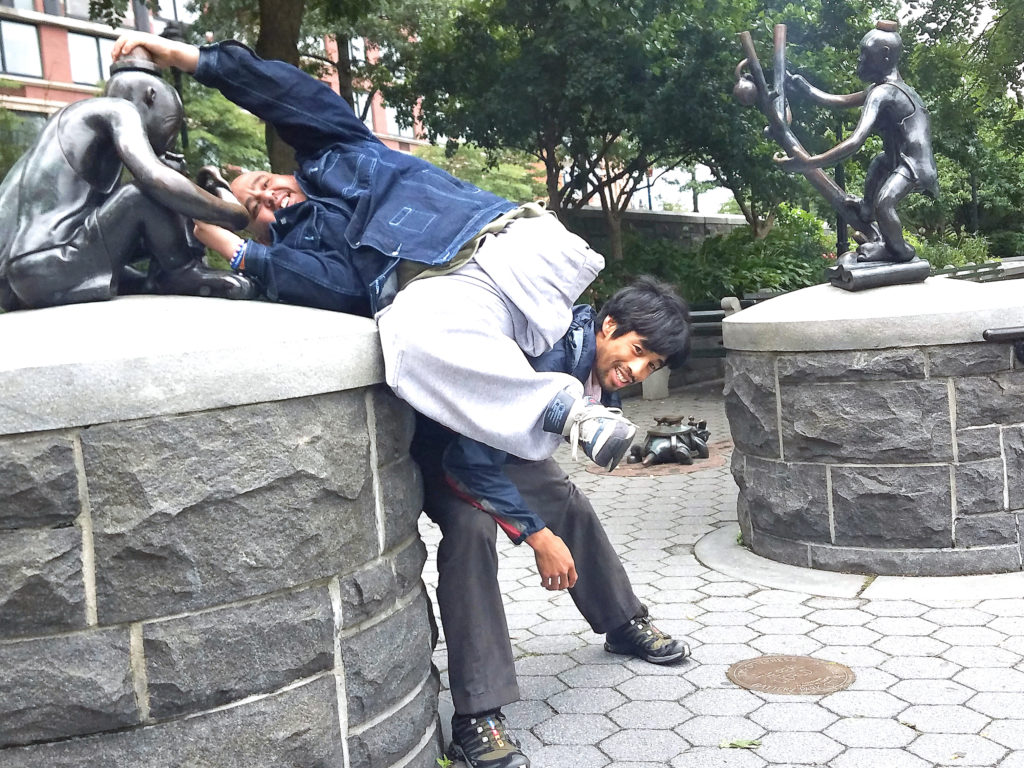
Exercises for Safer Weight-Sharing
Dynamic core strength is key for the unpredictability of sharing weight with a partner, says physical therapist Mia Ronson and athletic trainer Jennifer Beach, who work with dancers at Richmond Ballet. Use these exercises to prep for partnering—they suggest two to three sets of 10 repetitions.
1. Plank with alternating leg lifts: In an elbow plank position, alternate lifting each leg slightly off the ground, holding briefly.
2. Bird dog on exercise ball: In a high plank position, with the hips and lower stomach balanced on an exercise ball, simultaneously lift the opposite arm and leg, while maintaining stability on the ball.



3. Rotational core press: Stand with feet hip-width apart and knees slightly bent, with a resistance band anchored at chest height to the side of yourself (step to the side until there is tension on the band). Hold the band with both hands at the chest, then press the arms straight forward, resisting the rotational forces. To advance the exercise, stand on an unstable surface like a BOSU ball, a foam pad or a pillow.
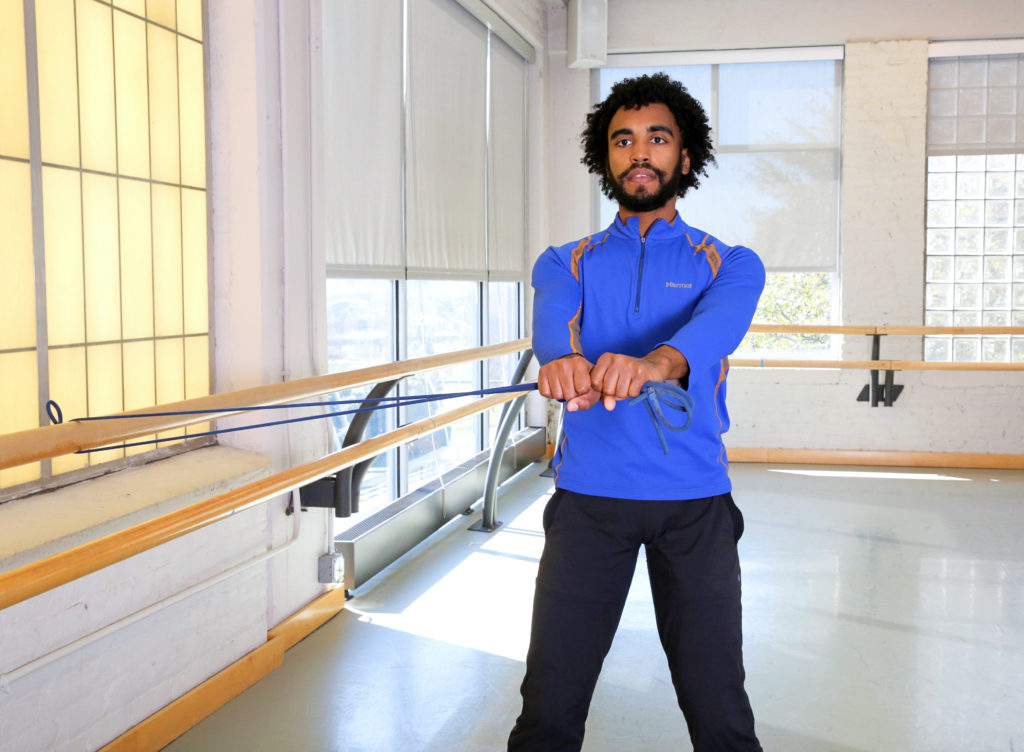
4. Hip bridge on exercise ball: Lie on your back with knees bent at 90 degrees and feet resting on top of an exercise ball. Perform a hip bridge while maintaining stability. To advance, add a hamstring curl while in the bridge position (rolling the ball towards your hips).
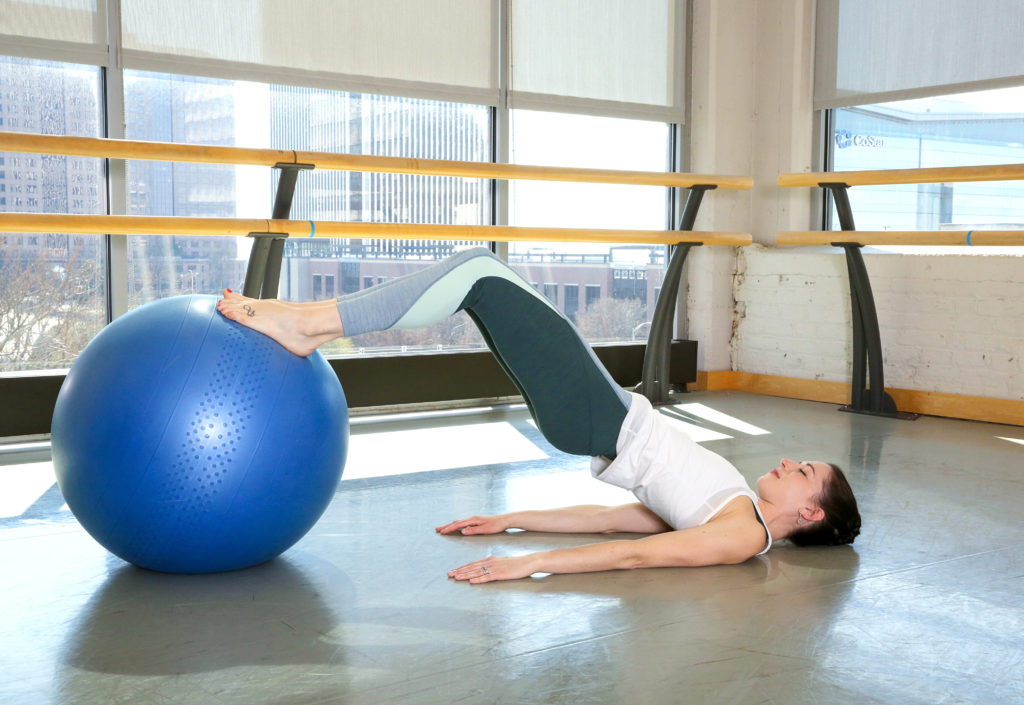
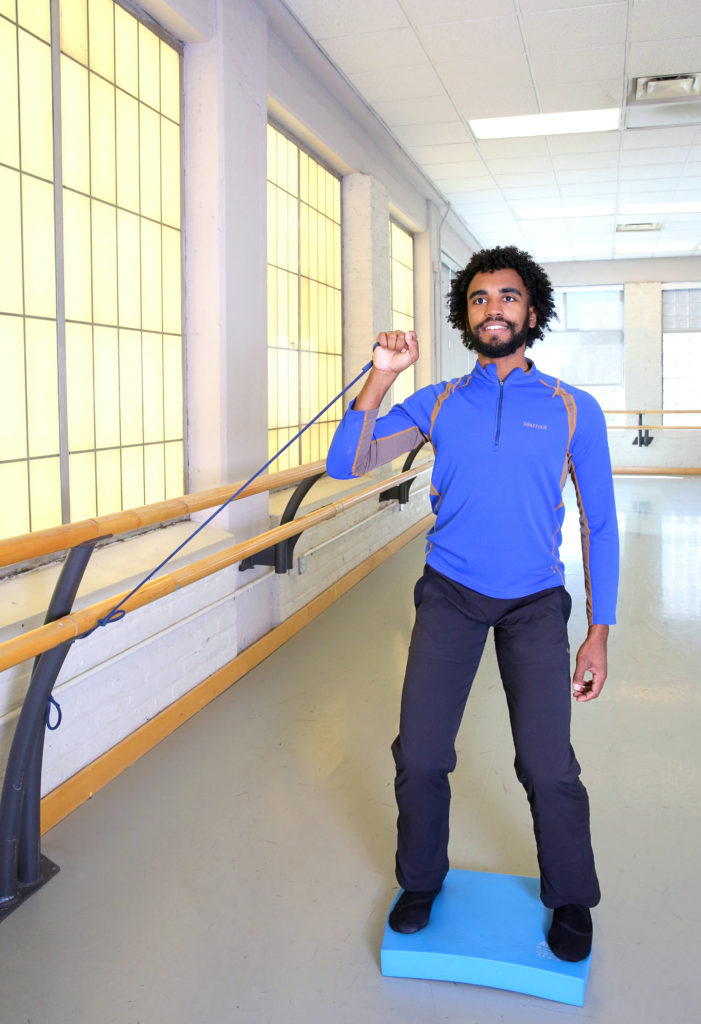
5. Shoulder press: Anchor a resistance band to a low, stable object. Grab the band with one hand, holding it near the shoulder while in a squat position, and press up to straighten the arm and the legs. Alternate pressing straight up and pressing diagonally up to the opposite side. Switch sides. To advance, try standing on an unsteady surface.
